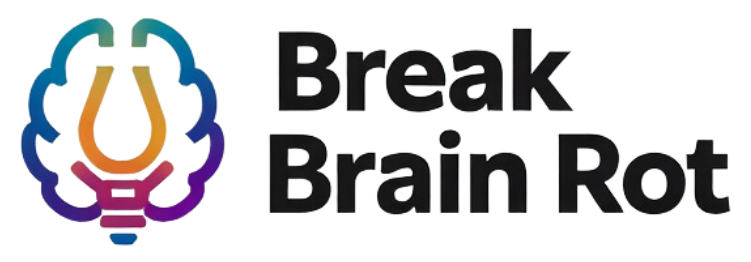With the average person checking their phone more than 100 times per day, it’s no surprise that our devices have begun to dominate our attention and drain our focus. Practicing digital detox strategies has become essential for protecting your mental clarity, productivity, and emotional wellness. This article explores actionable methods to help you unplug from technology and restore balance—covering everything from mindful screen habits to sustaining a healthier digital lifestyle.
Table of Contents
- Understanding the Need for Digital Detox Strategies
- Planning Your Personalized Digital Detox
- Daily Practices to Support a Digital Detox
- Overcoming Challenges During Your Digital Detox
- Reinforcing Your Digital Detox Long-Term
Understanding the Need for Digital Detox Strategies
The Impact of Technology Overuse on Mental and Physical Health
Constant connectivity can lead to fatigue, anxiety, and restless sleep. Studies from the American Psychological Association reveal that excessive screen time elevates stress hormones and shortens attention span. Over time, this can erode your ability to focus deeply and engage meaningfully with the world around you.
Signs You Might Need a Digital Detox
If you find yourself instinctively reaching for your phone in every quiet moment, feeling anxious when disconnected, or unable to focus without checking notifications, it may be time to reset. These are early signs of dependency, which you can explore further in our resource on Managing Digital Addiction.
The Benefits of Implementing Digital Detox Strategies
Adopting intentional digital detox strategies enhances focus, deepens personal interactions, and even boosts creativity. Many people report better sleep, reduced anxiety, and improved energy once they start controlling their screen time instead of letting it control them.

Planning Your Personalized Digital Detox
Setting Realistic Goals for Screen-Free Time
A successful detox doesn’t happen overnight. Begin by defining small, achievable goals—like no-screen mornings or device-free dinners. Over time, expand these breaks into full-day digital detox periods.
Identifying Tech Triggers and High-Usage Patterns
Notice when and why you reach for your devices. Is it boredom, habit, or stress? Use phone tracking tools to spot patterns. For specific guidance, see our guide on How to Use Screen Time Apps Wisely.
Creating Boundaries Between Work and Personal Tech Use
Establish separate devices or accounts for work and leisure. This helps maintain mental boundaries and prevents notifications from blending professional and personal spaces. Try scheduling digital check-ins during set blocks of the day rather than staying “always on.”
Daily Practices to Support a Digital Detox
Morning and Evening Routines Without Screens
Replace doom-scrolling with energizing rituals. In the morning, do a quick stretch, meditate, or journal before checking messages. At night, read a physical book or reflect on your day before bed—your sleep quality will thank you.
Engaging in Mindful Offline Activities
Support your detox by filling the gaps with enriching offline pursuits—walks in nature, hands-on arts, or face-to-face conversations. According to Harvard Health Publishing, spending time outdoors and socializing reduce stress and lift mood, making your detox more rewarding.
Implementing “No-Tech Zones” in Your Home
Establish spaces where devices are off-limits—like the dining table, bedroom, or during family gatherings. These “no-tech zones” encourage genuine connection and mindfulness.
Overcoming Challenges During Your Digital Detox
Handling Withdrawal and Digital FOMO
You might initially feel restless without constant notifications. Counter this by practicing mindful breathing or quick reflections whenever you crave a digital fix. Gradually, you’ll reclaim control from your devices rather than giving in to compulsion.
Balancing Connectivity and Productivity
Staying informed doesn’t require being online 24/7. Schedule your digital check-ins, turn off push notifications, and unsubscribe from non-essential alerts. That rhythm helps you remain productive while protecting your peace of mind.
Getting Support from Family and Friends
Share your digital detox strategies with those close to you. Invite them to join, creating accountability and motivation. For family-based detox methods, see our guide on Building Healthy Tech Habits as a Family.
Reinforcing Your Digital Detox Long-Term
Turning Detox into a Sustainable Lifestyle
Once you experience the benefits, transition from temporary detox to a lifestyle shift. Create ongoing boundaries and regular tech-free routines to avoid relapse into old habits.
Using Technology More Intentionally
Instead of quitting tech, use it consciously. Follow the principles from the Center for Humane Technology to prioritize apps and content that support your goals rather than drain your energy.
Periodic Check-Ins and Self-Assessment
Evaluate your digital habits monthly or quarterly to ensure balance. Are your screen-free intentions still strong? Adjust schedules or introduce new tech-free hobbies as needed to maintain your digital freedom.
Frequently Asked Questions
What are the best digital detox strategies for working professionals?
Start by defining work-only hours and pausing alerts outside those times. Incorporate short tech breaks during the day to reduce fatigue while staying productive.
How long should a digital detox last to be effective?
Even a single screen-free day can reset mental clarity. However, a consistent digital detox routine—like weekends off or nightly no-screen periods—yields lasting benefits.
Can a digital detox improve my mental health and focus?
Yes. Reduced screen exposure lowers stress and enhances attention span, allowing you to regain presence and creativity in both work and personal life.
How do I unplug from technology without feeling isolated?
Replace digital socializing with in-person connections or hobby groups. Offline engagement provides richer emotional experiences than scrolling social media.
Can families do a digital detox together?
Absolutely. Setting shared “no-device” times encourages bonding. Try mealtimes or family game nights without screens. For advice, see Building Healthy Tech Habits as a Family.
Conclusion
Practicing digital detox strategies isn’t about cutting off technology completely—it’s about using it intentionally to enhance your life. Start small: dedicate one weekend to unplug, notice how refreshed you feel, and gradually make these habits part of your daily rhythm. For more ways to strengthen mindfulness and reduce stress, explore our guide on Mindfulness Techniques to Reduce Screen Stress.

